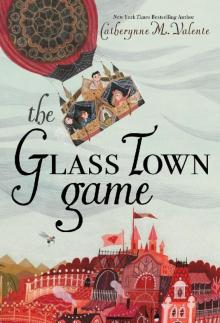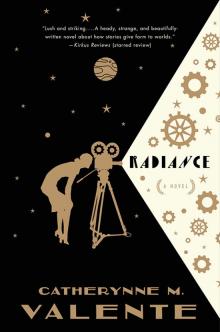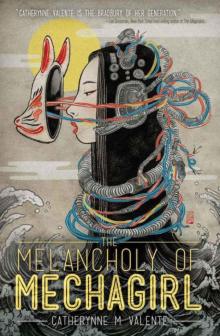


Cairo
Max Rodenbeck
Successive European visitors swore they had never seen any court to match the Mameluke ruler’s in pomp and wealth and size. Felice Brancacci, a Florentine diplomat, expressed the impact of such magnificence in a breathless account of an audience with Sultan Barsbay in 1422. Having been told to rise at dawn, he wrote, his embassy was left to wait for hours on the polo grounds outside the Citadel gates. At last they were conducted in and closely escorted upward through an endless sequence of courts and vaulted passages packed with neatly uniformed royal guards. After being searched for weapons “down to our hose,” he writes,
We arrived at the sultan’s quarters, having climbed eight full flights of stairs guarded by more Mamelukes. These last were equipped with lances tipped with many points so as to resemble halberds, and they clashed these together over our heads as we passed.
The room which we now entered was divided like a church into three naves separated by stone columns. It was paved with marble marquetry and covered with a carpet over most of its surface. Facing the entrance was a sort of stage with a stair on either side. On this stage, seated right on the boards, was the sultan. He was dressed in white linen…a man of thirty-eight to forty years with a brown beard. Immediately behind him stood a great number of his Mamelukes. One held in his hand a sword and its scabbard, another carried a ewer, a third carried high on his shoulder a tube, a fathom in length and an inch in width, all of gold coins….The disposition of the whole vast assembly brought to mind a triumphal scene such as one might see in a painting. On every side were musicians playing the viol, the rebec, the lute, hollow instruments and cymbals, all together and accompanied by singers.
Myself, my eye dazzled and ears deafened, aside from kissing the floor at every step, I make no claim to describe this with any order. What is more, each of us found himself seized at the shoulders by two men and treated like pack animals: each time they wanted us to kiss the floor they deafened us with shouts in their language. In this way they made us kiss the ground seven or eight times. When we were some fifty yards from the sultan we were stopped and the noise ceased. They told us to be brief for this first interview, during which at every moment three glinting hatchets were brandished over our heads. We had hardly told our interpreter a dozen words to introduce the matter when we were interrupted. “Enough! Enough!” And while making us kiss the floor, they conducted us in retreat to the entrance….
I note as a detail that in presenting the letter of Our Lordship, we kissed the document and held it before us for a moment. The official that took it grunted in our faces over the letter, then slapped us each with it well and good….
Everywhere we were told that never had Frankish ambassadors been given such a good welcome….
Brancacci was later given a far warmer private reception. His mission was a success. The sultan granted Florence trading privileges.
And in fact Cairo could hardly be considered an inhospitable town. Entering the massive eleventh-century gate of Bab Zuwayla even now one gets a sense of the conveniences afforded to medieval travelers.
Inside the passageway itself, the tall grilled window on the left was once a platform for public Koran chanters, whose job was to bless passersby with the word of God. A few steps on, a public drinking fountain catered to wayfarers of the Ottoman period. The upper floor of the small building was devoted to a Koran school for children. Pious benefactors endowed hundreds of such institutions in the city, so heeding the Prophet’s saying that the two greatest mercies are water for the thirsty and knowledge for the ignorant.
A large caravanserai, a typical example of the seventy-odd merchant hostels that al-Maqrizi enumerated in the city, stands next door. Largely collapsed now, its upper stories once provided lodging for travelers. The courtyard, now congested with shops and workshops, was originally an open trading floor where caravans could unload their goods. Just beyond is a public bathhouse—one of fifty-two listed by al-Maqrizi—while across the street rises the great tomb, mosque, college, and dervish monastery of the fifteenth-century sultan Al-Mu’ayyad Sheikh, where incidentally al-Maqrizi worked for a time as a professor of Islamic traditions. Sparrows chirrup and flitter among the trees in its spacious courtyard, accompanying the snores of the weary faithful who for more than 600 years have used the mosque for their afternoon snooze. No fewer than six more tuition-free colleges of Islamic science—dating from the thirteenth to the sixteenth centuries and now preserved as tourist attractions—line the street to the north, as well as the scant remains of the massive charity hospital of Sultan Qalawun.
This thirteenth-century structure was only one of several free hospitals in the city. The earliest, a full 400 years older, was paid for by a tax on the slave market. Its inmates were to be kept under care, it was stipulated, until well enough to consume a whole roast chicken. The foundation charter of Qalawun’s hospital was similarly detailed: It specified, out of a total annual budget of 50,000 dinars, a precise sum for the purchase of palm fronds to fan the feverish. Priority of treatment was to be given to “the most needy, the unlucky, the weak, the helpless, and the wretched.” Doctors made rounds twice a day, touring the separate wards for different diseases and supervising the in-house apothecary.
Most such institutions were financed by a form of endowment trust that developed to exploit loopholes in Islamic inheritance law. Because the law divided legacies in strict mathematic proportion, properties tended to disperse quickly. Owners who wanted their estate kept intact after their death, or perhaps favored one of their descendants, would form a waqf, which meant literally to put a “hold” on their property. As long as the property’s revenues were devoted to a charitable purpose, the benefactor could then appoint whomever he wished as the salaried executor of the waqf. The trusts were theoretically held in perpetuity, and had the added advantage of being—again theoretically—immune from confiscation by the government. By the year 1339 the income from 130,000 acres of farmland, as well as from a good chunk of urban real estate, was devoted to the upkeep of Cairo’s fountains, schools, and hospitals. By the end of the eighteenth century a fifth of all Egypt’s arable land—some 600,000 acres—was held in waqf, including one small property, endowed in the thirteenth century, that provided for the daily feeding of Cairo’s stray cats.
THE SCALE of medieval Cairo, combined with the complete veiling of half its people—namely, women—allowed for a very modern degree of anonymity. One visitor in 1390 said the Qasaba was so packed on an average day that he assumed at first there was a wedding or funeral in progress. Moreover, he noted with delight, the crowding made it possible to pursue young boys or women without attracting notice.
Perhaps the predator was less perceptive than he thought. It was at about this time that ladies of fashion adopted male dress. As al-Maqrizi explained, this was “because the love of men spread among the nobles so that their women tried to make themselves look like boys in the hope of capturing the hearts of their menfolk.” The scandalized sultan forbade ladies from wearing turbans.
Such blandishments reflected a firm belief that women needed to be controlled and protected for their own good. The veil was de rigueur. This was not so much because of any Koranic injunction as because it was thought to preserve men from temptation, which was something that the truly masculine man was assumed to be unable to resist. Women, conversely, were assumed to be predisposed to tempt. This was why the law stipulated that so long as a man had paid his dowry in full he could forbid his wife from leaving his house. In the fourteenth century, one Cairo sheikh was held up as a model because he obliged his wife to inform him of every single thing she did in his absence. Even if she had only moved a jar from one shelf to another, the sheikh had to know, because he, as her husband and her better, was responsible before God for her deeds.
Al-Maqrizi reveals just how zealously female chastity was guarded in an anecdote about the tomb of Tatar al-Higaziyya, who was one of Sultan al-Nasir Muhammad’s daughters. This enormously rich lady’s waqf endowed salaries for several
Koran readers as well as a staff of eunuchs who were to keep constant vigil at her tomb. One of the Koran readers devised a classic Cairene ruse to avenge some slight. He denounced a fellow reciter to the chief eunuch guard. The cheeky fellow, he whispered, had snuck into Lady Tatar’s tomb chamber in a scandalous state, without wearing his drawers. Enraged, the chief eunuch had the bewildered fellow dragged before him and flogged as he shouted, “You dare enter the presence of Her Ladyship without underwear!”
Some visitors, however, reckoned that the women of Cairo enjoyed a fair degree of freedom. Observing crowds of ladies heading daily to the city’s cemeteries, the Danish traveler Carsten Niebuhr noted in 1761 that they went “on pretense of performing their devotions, but in reality for the pleasure of walking abroad.” One of the attractions of the graveyards, indeed, was that by custom women removed their veils there. Why not? After all they were among family, even if these male chaperones were dead.
Islamic law allowed women to own property long before it was the case in the West. A quarter of the waqf deeds that survive in Cairo’s archives from the years 853 to 1516 are in the name of women. Certain professions were reserved: hairdressers, professional mourners, marriage brokers, midwives, and purveyors of fashions and cosmetics were all female. Some women worked as merchants, and even as religious teachers and ascetics who staffed the city’s several Sufi convents. At least one tough lady gained fame as the leader of a neighborhood gang. Aziza the Beast, as she was known, ran a protection racket near Bab Zuwayla in the nineteenth century; her skill at delivering knockout blows with a butt of the head kept shopkeepers in terror.
The female ideal, however, was absolute, pampered indolence. According to the fifteenth-century traveler al-Hasan al-Wazzan al-Zayyati, better known as Leo Africanus, the upper-class ladies of Cairo were so wary of their reputations that there was not one who would deign to spin, or sew, or cook: “When the husband is at his shop, his wife dresses up and perfumes herself, then takes a donkey and rambles about town visiting parents and friends.” Men had to keep on their toes, too. It was true that a wife was legally obliged to accede to her husband’s request for intercourse, but then it was also possible for a wife to proclaim before a judge that her husband was impotent. This was a “very frequent” cause for divorce, says Leo—and he is backed up by documentary evidence in the form of a court ruling from 1341. For whatever reason, divorce was common: the daughter of one Mameluke amir married six times, while one of the later caliphs’ daughters had five successive husbands. Records from the Cairo religious courts in 1898 show that there were three divorces for every four marriages in that year.
Among the ruling class, alliances between families were often sealed by intermarriage. Writing in the 1820s, this is how Edward Lane described the influence that a higher-status wife could wield on her husband’s behavior:
It is not uncommon for a wife who is the daughter of a man of higher rank than her husband to exercise a severe degree of tyranny over the latter: and the case is generally the same when a pasha, or other great personage, gives a slave of his own harem in marriage to one of his officers. She will not allow him to have any concubines; but considers all female slaves as her own; and may even carry her authority so far as not to permit those who have the least pretensions to beauty to remain in his presence when he visits the harem; or will oblige them to veil their faces. Some adopt a different course: they pretend not to object to the husband’s having concubines; but when any one of them becomes a favourite, and the wife is neglected, the latter contrives to remove the object of her jealousy by means of poison.*8
Then, as now in Cairo, whiteness and plumpness were considered the twin traits of feminine perfection. The first of these was easier to achieve, since veils shielded women of class from the disfiguring rays of the sun. Getting fat was another matter. So pressing was the need for fullness, say the chroniclers, that Muslim parents forbade their marriageable daughters to fast during the month of Ramadan for fear of putting off suitors. One Ibn al-Hajj, a Moroccan critic of Cairene wiles, informs us that patrician ladies of the fourteenth century ate fattening food at bedtime, making nightcaps of breadcrumbs mixed with nuts. Some swore by a concoction of crushed beetles, while the real fanatics even sipped human bile in the belief it increased the appetite.
Medieval Cairenes were clearly obsessed with appearance. Under their gauzy black veils and pillbox hats and white overcoats, under linen camisoles and silk pantaloons and bejeweled slippers, women of leisure were commonly tattooed, bodypainted, nail-polished in red lacquer, lipsticked and rouged, hennaed and expensively perfumed. At one stage the fashion was for enormously long sleeves that required as much as 92 cubits of cloth.*9 The government felt obliged to ban this extravagance, but intervened again in 1472 to demand the wearing of tall hats—“at least a third of a cubit high”—instead of indecently short ones. (Knowing Cairo, one may speculate that some manipulative Mameluke official had cornered the market and spotted a profit in high hats.)
When sectarian rules were enforced, as they were when public tolerance was on the wane, Muslims wore white turbans, Christians blue, Jews yellow, and the tiny sect of Samaritans red. Each of the many Sufi orders had its own color of turban, too, tending to greens and blacks and crimsons. Dress denoted rank as well as faith. There were special uniforms with special headdresses for every class of court official, from slipper bearers to heralds to scribes. The highest honor of the Mameluke state was to be given ceremonial robes by the sultan. The linens and silks and furs, the gold-studded belt and fine saddle and armor that made up such a gift had a value equivalent in modern terms to a luxury car.
Small wonder that perhaps the most bemoaned change that came with the fall of the Mameluke sultanate in 1517 was the decline in sartorial splendor. To wear the tall red felt hats around which the Mamelukes wound their turbans became an offense punishable by death. The conquering Ottoman troops who ransacked the city, complained one Cairene witness, were not only drunk but also ill-clothed, wearing silly conical hats and slovenly uniforms “such that one could not distinguish among them between master and servant.” Worse yet, to a Cairene accustomed to staining his whiskers with henna and perfuming them with civet, many were beardless.
THE MEDIEVAL CITY’S social calendar provided plenty of occasions for ostentatious display. At the hippodrome below the Citadel, each Mameluke amir’s private army and the sultan’s royal troops showed their mettle at weekly polo matches and archery contests. Aside from the local saints’ days and Muslim feasts, a great yearly festival marked the departure of the pilgrimage caravan to Mecca. Another celebrated the height of the Nile flood. On this Day of Plenitude the sovereign would sail the royal yacht to the island of Roda to anoint the measuring pillar of the Nilometer with musk. Then, at his signal, workers would demolish a dike built across the khalāj or drainage canal that linked Fustat to Cairo. A doll representing the bride of the river—a sort of model sacrificial virgin—would tumble into the current as the unleashed waters surged up the channel into the city to the sounds of kettledrums and cannon shot. In the evening, revelers took to the stream in illuminated boats. On this day, says the prudish al-Maqrizi, the water of the Nile became polluted with shameful sins: “There were many murders by drunken men, and forbidden things were done openly.”
Al-Maqrizi’s disapproval was not shared by earlier chroniclers. A witness to the Christian feast of Epiphany on January 10, 942, the historian al-Mas‘udi, describes a scene of cross-confessional fun. The city’s ruler had ordered a thousand torches erected on the Fustat riverbank, and a thousand more facing them on Roda. “Muslims and Christians by hundreds of thousands crowded the Nile in boats, or in kiosks on its shores, all eager for pleasure and vying in equipage, dress, gold and silver cups, and jewelry. The sound of music played all about, with singing and dancing….It was a splendid night, and most people bathed in the Nile, knowing full well that it is a cure for all disease.”
After every military triumph, parades would marc
h down the Qasaba to show off captives and booty. Following the sacking of his realm by the Mamelukes in 1426, King John of Cyprus was dragged through Cairo in chains. The townsfolk jammed so close together and cheered the spectacle with such zeal, says the chronicler Ibn Taghribirdi, that a man could not hear his companion’s words. But the observer drops an inadvertent clue about the nature of Cairene crowds when he adds that on this occasion they gathered spontaneously, “without being sent there for the purpose by anyone.”
Taverns lined the leafy banks of the khalīj. Pleasure boats cruised the many seasonal lakes around the city, which were favored haunts for lovers of music and imbibers of hashish, opium, and wine. Though spurned by the pious, such vices brought hefty revenues to the state. In the early fourteenth century taxes on wine and prostitution—another strictly regulated industry—brought in a reported 1,000 dinars a day. For a time the governor of Cairo himself controlled the city’s prostitution rackets. Indeed, complained al-Maqrizi, so greedy were the Mameluke state’s tax collectors that women of ill repute resorted to ambushing potential customers and holding them for ransom. The trade flourished particularly in the western suburbs and near Bab Zuwayla. By the sixteenth century the district of Bab al-Luq alone could boast some 800 ladies of the night. A Turkish tourist of the time assures us that they excelled in uttering voluptuous, raucous cries and in making slow, coquettish motions “like an Arabian horse that has slipped out from under its rider.”
Cairo offered more innocent pleasures, too, in abundance. The gardens between the city proper and the Nile charmed Joos van Ghistele in the fifteenth century—particularly the banana trees, which he had never seen before: “Lords, ladies, and merchants pass their time in these gardens and orchards, some in houses, some in tents, some in pavilions….They have food and drink brought, and all that they need. One sees many ladies come to walk about and visit relatives, and to amuse themselves such that, in truth, they live there as in paradise.”














